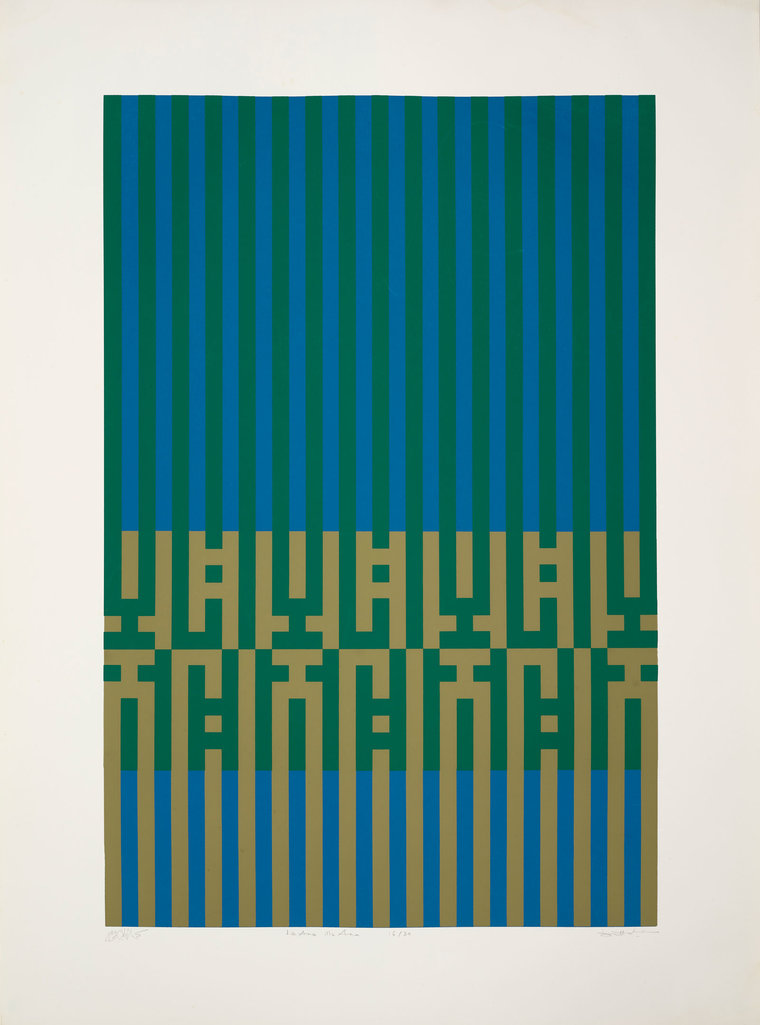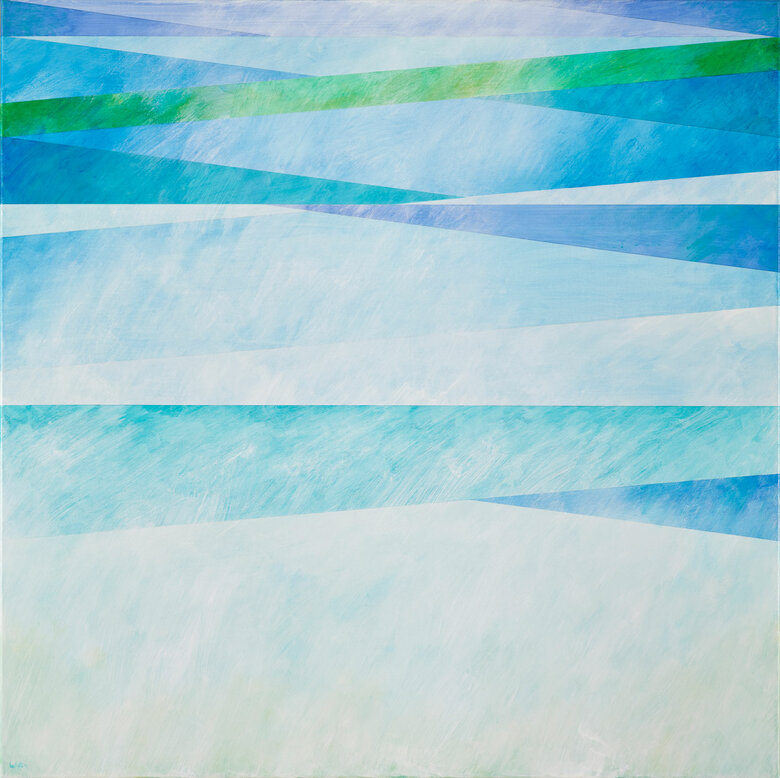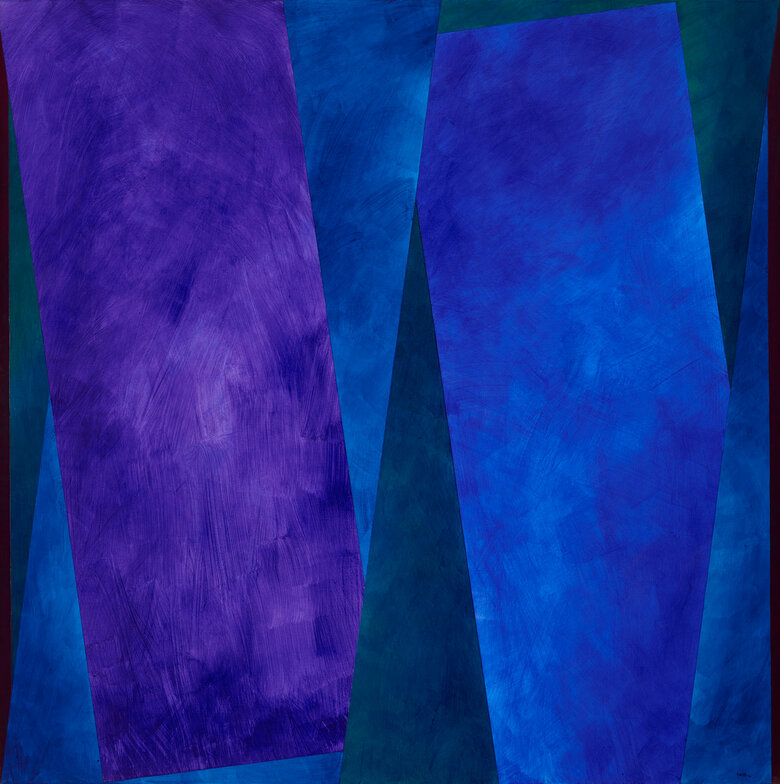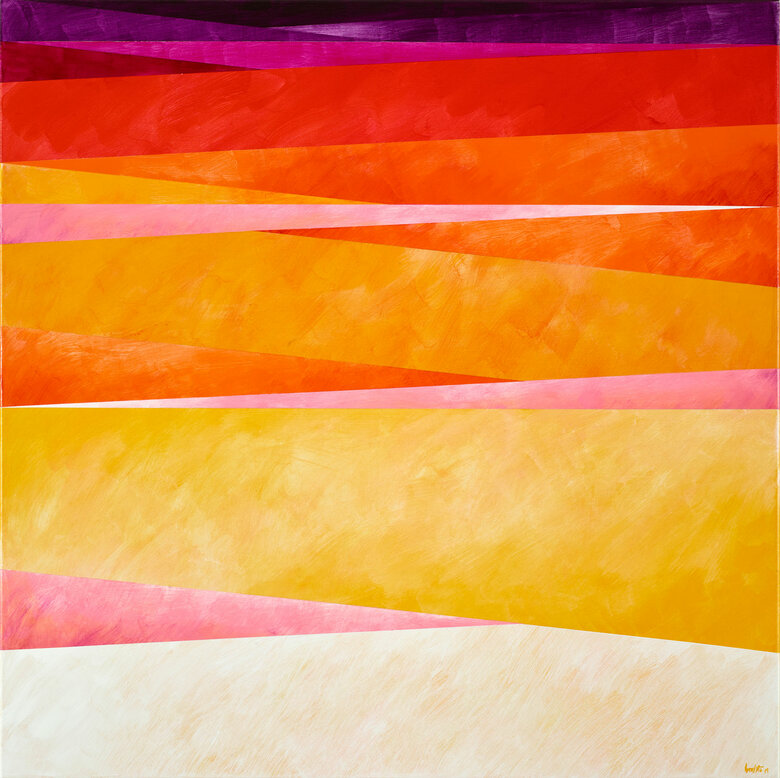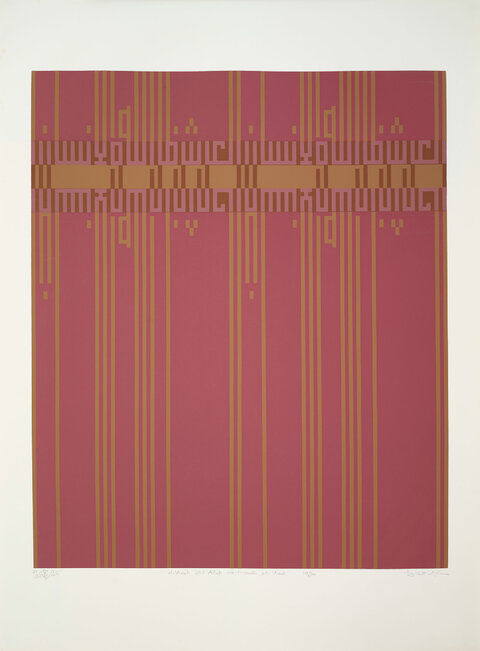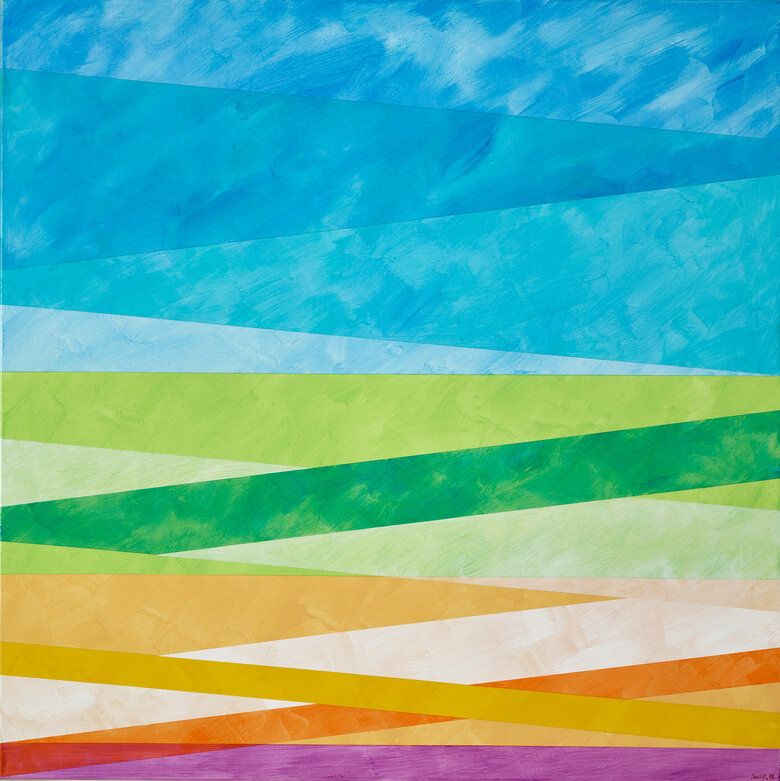Kamal Boullata’s work merges his explorations as an artist and art historian. His artistic techniques were heavily inspired by Islamic art and calligraphy, namely the Kufic script. This script is one of the oldest forms of Arabic calligraphy, known for its angular, geometric style, which blended seamlessly with the abstract geometry that characterizes much of Boullata’s art.
The Kufic script became central to Boullata’s work, particularly through his involvement with the Hurufiyya Movement—the mid-20th-century art movement that sought to integrate Islamic calligraphic traditions with modern abstract art—such as in La Ana Ila Ana (There Is No I But I), 1983, which is a silkscreen print on paper.
Silkscreen printing, also known as screen printing or serigraphy, is a method in which ink is forced through a fine mesh screen onto paper or another surface, creating bold, opaque layers of color. Boullata’s use of this technique allowed him to produce works with richness and depth that are difficult to achieve with other printmaking processes. The heavy, opaque layers of color in his silkscreen prints create a visual impact that is both modern and deeply rooted in the traditions of Arabic calligraphy.
In La Ana Ila Ana (There Is No I But I), 1983, Boullata plays on faith in the Islamic religion. He re-codes religious texts in abstract geometric forms, giving them a secular feel or a simplistic framework that speaks to contemporary themes of identity and self. For Boullata, printmaking allowed him to explore the intersection of Islamic and Byzantine aesthetics while engaging with his visual and verbal memory. His images, often appearing as part of larger groups or series, are characterized by their orderly, composed nature, where color fields, letters, and lines are set into complex relationships.
In Boullatas' works, bold and serene colors create a visual effect that resonates with Byzantine and Islamic art. Boullata grew up in the Christian Quarter of the Old City of Jerusalem. His art was influenced by Christian religious art; in addition, he was inspired by Islamic art - an art history that he mastered. Boullata’s art profoundly explores memory, identity, and cultural heritage. Through silk screen printing and his engagement with the Hurufiyya movement, Boullata created a body of work that bridges the past and the present, the personal and the universal. His works reflect his journey of exile and return and invite viewers to contemplate the intricate interplay of words, geometry, and color in the search for meaning and identity.
signed and dated in front lower right with title and edition front lower middle

